In this article I go through with you about some information you should consider before purchasing a cycling camera. And then we will go through what are some of the best options to choose from.
Why Get A Cycling Camera?
If you are like us and enjoy travelling all over the world by bicycle! Then a camera will come in handy to document your adventures and capture them on camera so you can cherish the memories for the rest of your life. Taking you back to the exact moment in time when you were cycling in what ever country having the time of your life. Sharing with your friends and family who are back at home and updating the Insta!
But also getting a camera to mount on your bike or your helmet is also a good idea for safety reasons. There seems to be two types of cameras for cycling or at least two main uses. One being as mentioned before, more documenting your cycling environment and the scenery. But there are safety cameras specifically designed to as as a “dash cam” style of camera like you would have in your car. Just in case you get in an accident. As cyclists we are more vulnerable when it comes to road use and if you get in a accident you have proof of what happened, just for the extra security.
What To Look For In A Good Cycling Camera!
There are a few things you should consider looking further into before purchasing a cycling camera. The information below will save you time and money buying cameras that are not up to chop and get you on your bike sooner and filming some epic rides.
Camera Recording Quality
One of the more important factors when considering a cycling camera is its recording quality. Generally in todays day of age we are blessed with some rather good quality cameras for a fraction of the price they used to be. But still really cheap cameras will have rather limiting recording quality and must be considered if you are after clean looking footage.
From top to bottom in the list below. 720p is the lowest pixel density you might find in a cycling camera. For example the 1280 x 720 pixels means the amount of total pixels the camera uses to create an image and in the case for 720p that is 900,000 pixels.
- 720p consists of 1280 x 720 pixels (so over 900,000 pixels)
- 1080p consists of 1920 x 1080 pixels (just over 2 million pixels)
- 4K consists of 3840 x 2160 pixels (over 8 million pixels)
Then you have 1080p which is standard HD and 4K which is even crisper. Keep in mind that 1080p is about the standard for decent looking images and photos. If you want something with 4K capabilities this is going to cost more.
Along with the recording quality when it comes to pixel density. There is a number of other factors that equate to a good cycling camera. Like, the amount of fps or frames per second the camera has. The higher this number the more smooth the footage will seem. For example if a camera has 60fps you can slow the motion down to half speed for cool looking slow mo effects. You can even get some normal camera up to 120 fps.
Further image stabilisation is another thing that is nice to have in a cycling camera. Due to the nature of cycling it is rather bumpy and painful to watch back on a camera if the footage isn’t smooth. Such stabilisation can make a image looking clean and nice, while footage is smooth.
Weight And Size
Like most gear when you are bikepacking you want something that is ideally as lightweight as possible and small in size. The same goes for cycling cameras. The less weight means less for you to carry on the bike and saving energy at the end of the day. But to be honest most cameras a relatively lightweight anyway. But it is still something to consider.
If you want to mount the camera to your helmet it is rather important that you get the lightest camera possible. I used to have one of the first edition go Pros back in the day and this camera was rather heavy and you could feel it after a few ours in the saddle. It believed it weighed like 0.45 pounds or 200 grams. So honestly anything under that is rather good. Now I believe something like the new GoPro Hero 8 is almost half the weight at 116 grams. But when you match weight to battery life this is where you may run into issues. Sometimes the lighter the camera means less battery and less battery run time. Ideally you want a camera that lasts as long as possible between charges.
Battery Life
This leads me onto the next point, being the cameras battery life. Battery life varies quiet a lot between all different kinds of cameras. As mentioned the battery life is in generally correlation with the balance between size/weight and runtime. So it is worth finding the camera that suits your desired needs.
Connectivity
Higher end cameras will have Bluetooth, ANT+, Wi-Fi, and NFC connectivity options. Although these are not essential for a cycling camera. They make the user experience that little bit better. Some cameras like the GoPro will have a App to pair your camera to your phone device to manage footage.
Storage Capacity
All modern day cycling cameras will work with SD cards and when yes it is ideal if you can get a camera with very large capacity. Generally 16 GB and 32 GB is more then enough when you are saving footage to a hard drive. Although some cycling cameras don’t support 64GB or 128GB cards.
Along with the storage capacity, and particularly for safety cameras or the bicycle dash cam. Looping footage is another feature that could come in handy for a cycling camera. This looping video allows a camera to record continuously. When it runs out of memory space it starts to overwrite your existing footage. This is a good feature as you will never end up with a full camera and there is no need to delete unneeded footage manually. Allowing the camera to keep recording regardless.
Mounting Options
There are a number of ways to mount cycling cameras to either your bike or you. Popular ways to mount are helmet mounts, either on top of the helmet or at the rear. Rear camera which mounts on the seatpost. handlebar camera mounts. You can get chest mounts, but these are not the most comfortable for longer rides.
Best Camera For Bicycle Touring or Bikepacking?
If you are looking for normal camera to capture your adventures but also need something that is travel friendly. Lightweight and able to be stored away easily. This linked articles includes some of the best 14 cameras for your bike adventures!
Should I Get A Bike Camera?
The short answer is yes! If you are riding on the road you want a camera on your bike at all times for safety. The best type of camera would be a rear facing camera as that’s the time you’re most likely to have a hit and run scenario. But if you are mountain biking and want a camera to film you shredding the trail then that is up to you. It is always good fun filming my bike adventures and I get a kick out of creating YouTube videos and sharing my journey with the world. But like I said it is a good choice if you want to collect footage and the memories of your travels and the scenery you rode in.
The Different Types Of Cameras!
This leads me onto the next point when choosing a cycling camera. And that is to first understand all the different kinds available on the market. As some offer different benefits, functions and features. There a cameras more suited for your security like Safety Cameras or Bicycle Dash Cams. 360 Cameras, rear facing bicycle camera, bicycle helmet rear view camera and many other options which we will get into.
GoPro Hero8
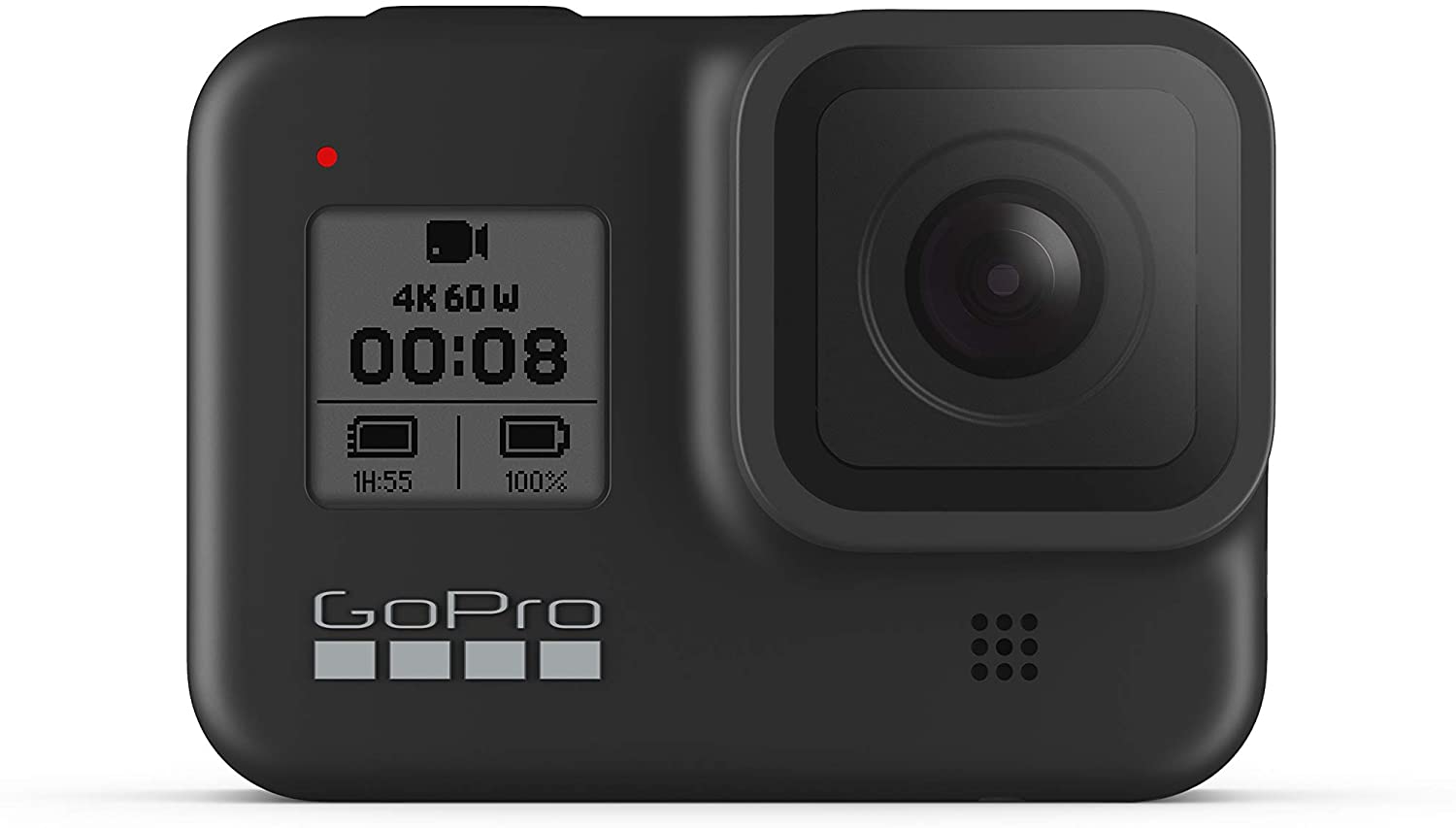
GoPro are popular for their action cameras. And they are perfect for cycling and other more extreme sports. I remember when they first came out, I got the very first model that I still have. Back then they weighed just under 200 grams. Now this Hero8 model is almost half that. They have come a long way since the beginning. It comes with three levels of stabilisation, which gives you the smoothest video ever offered in a HERO camera. Designed in a very stylish and modern design, the lens is now 2x more impact-resistant compared to previous models.
The camera can be purchased separately with the possibility to use the HERO8 Black mods. These include add ons or Media Mods which gives you shotgun-mic performance and lets you attach Light Mod and Display Mod to up your capture game. Making it perfect for Vloggers, pro filmmakers and aspiring creators. You can broadcast livestreams in 1080p via the GoPro app and save footage to your SD card to check out later.
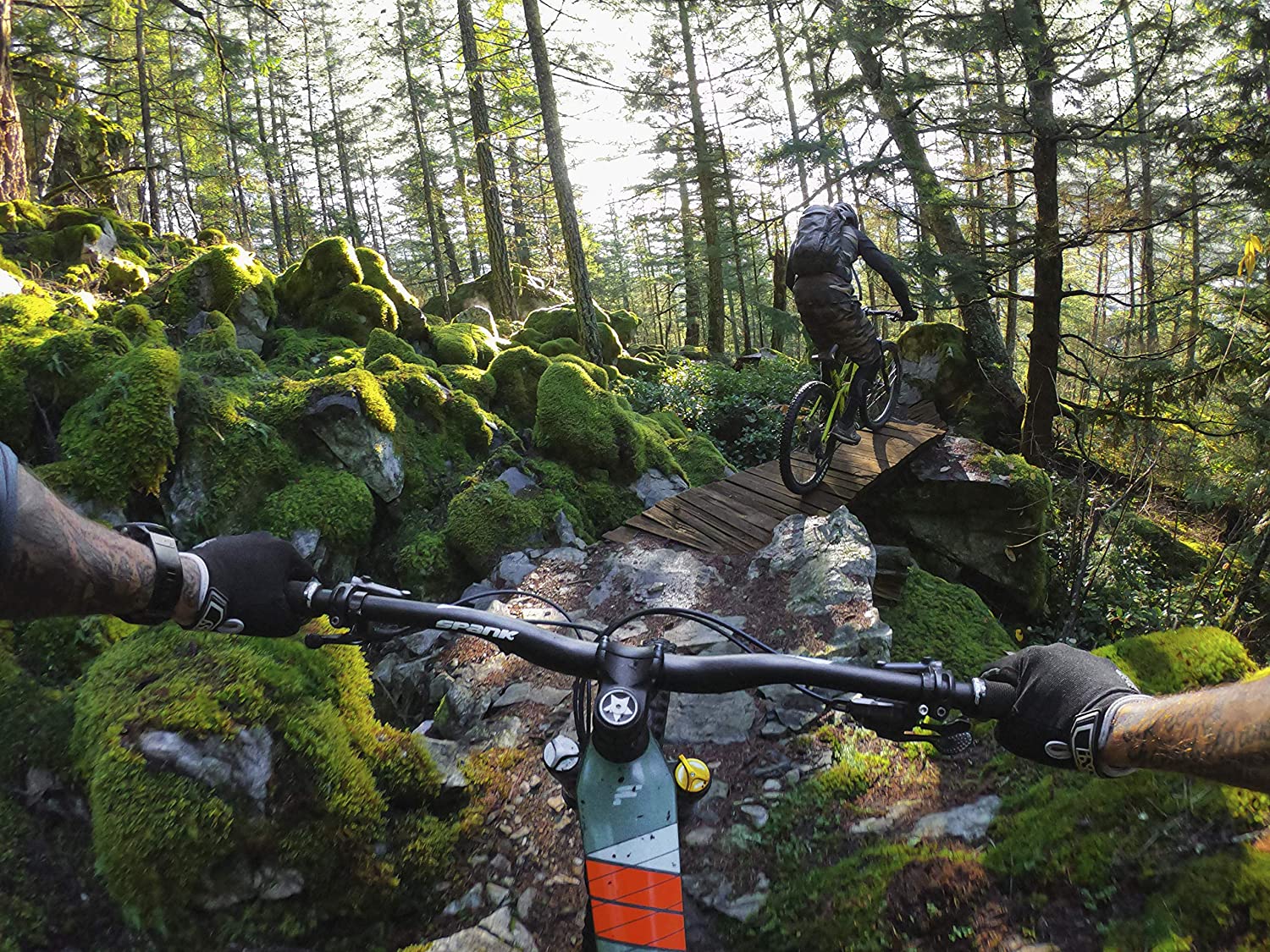
One of the features of this camera I really like and thing is so worth it. it would really up my vlogging game. Called the TimeWarp 2.0, which captures super-stabilized time lapse videos, say while you are riding your bike. It has other features like LiveBurst and SuperPhoto + HDR. Also the camera films in ultra HD 4k video for that super clean looking footage. Priced at $299.99
TomTom Bandit
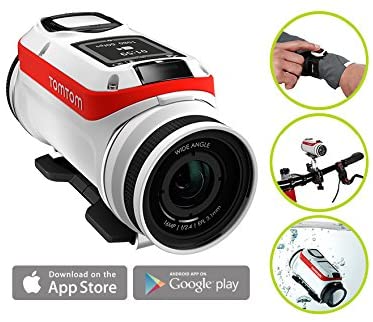
The next option is a adventure action camera by Tom Tom called the Bandit. It is a little cheaper then the Go Pro 8 and it is a different design too. You still get the luxury of the highest resolution action footage in the form of 4K. You get a fairly long battery life which allows for 3 hours of non stop filming. One of the difference in features of this camera is the data that it provides around your adventure. It contains built in sensors to monitor Speed, G force, Altitude, and Rotation and appears on playback videos to prove your performance. It is used with a the Bandit App for both iOS & Android devices. If you are a minimalistic traveller, then you will like how this camera requires no cables. Tom Tom have integrated a USB port for charging and file transfer in the Bandit Action Cam. Also it is waterproof for up to 40m and priced at $249.95
GoPro Hero4 Session
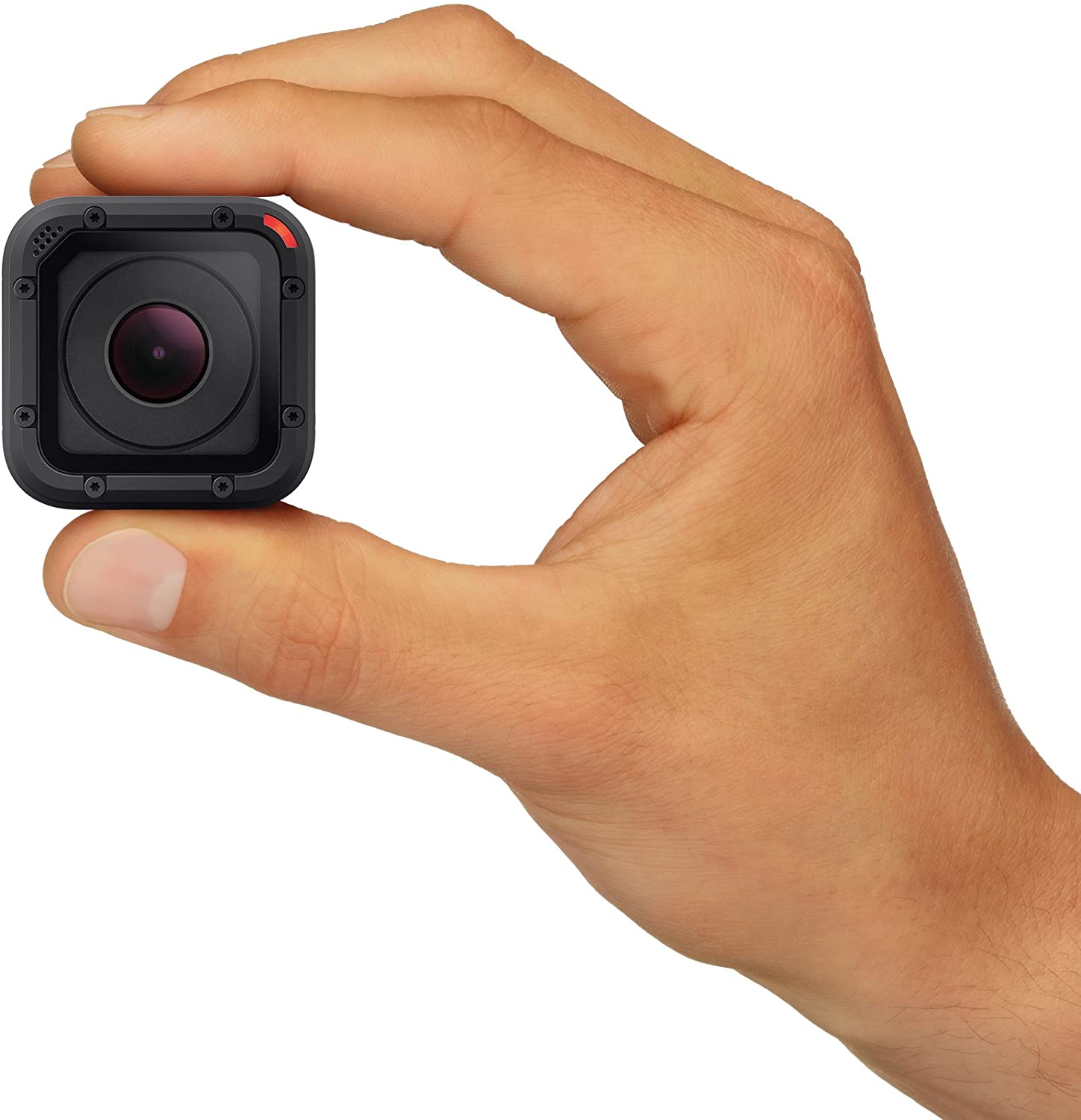
If lightweight is your thing, then I would not look any further then this Hero4 session action camera. Super slim version of the original Hero series. When it comes to footage quality it is rather limited and not as good as the Hero 8 and 4k video. You only get up to 1080p and 8MP photos with 12 fps Burst. But it is very simple to use if you are not that tech savvy. As it features a easy one button control, power up and capture videos or photos with a single press. There is no housing needed and it is durable and waterproof to 33 feet (10 meters). It is the smallest, lightest with built in Wi Fi and Bluetooth, HiLight Tag enables you to mark key moments while recording or playing back video.
You get quite a lot of mounting options for this camera, as it comes with specially designed mounts and accessories that work seamlessly with other GoPro gear. It has a built in battery, built directly into the camera and offers up to 2 hours of recording time on a full charge. Another cool feature of this camera is the dual audio capturing capabilities. When you are in windy conditions it will pick which mic is best for audio quality. As it has one on the front of the camera and one on the back. Priced at $129.00
Garmin Virb XE
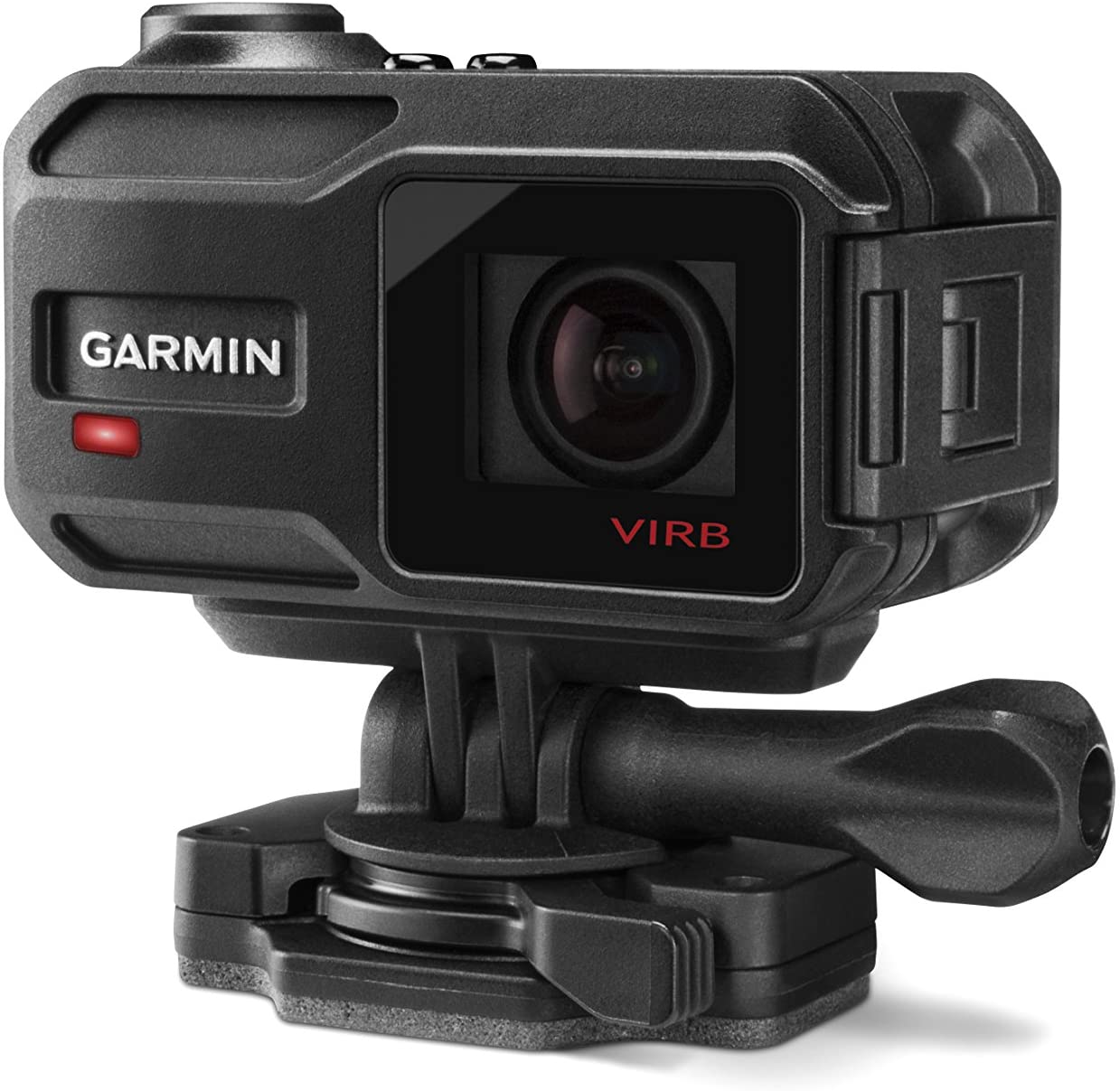
Garmin have come to the market with their own version of the action camera. With the ability to film with high definition 1080p resolution at 60 frames-per-second, or capture up to 240 frames-per-second slow motion. One of the selling points of this camera is the built in GPS. It features the G-METRIX-Built-in GPS and external sensors with connectivity to Garmin devices to capture performance data like speed, elevation, heart rate and G-force. So you don’t miss those more difficult to capture moments on the bike, the camera has a built in burst shooting mode that will capture several photographs in quick succession. It is waterproof to 50 meters without a case. it also feature bluetooth audio connectivity allowing it to connect directly to wireless Bluetooth headsets or microphones. Priced at $419.99